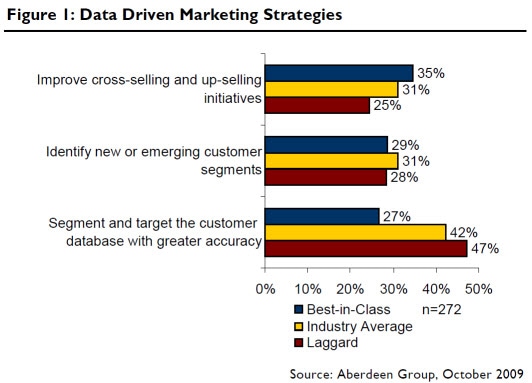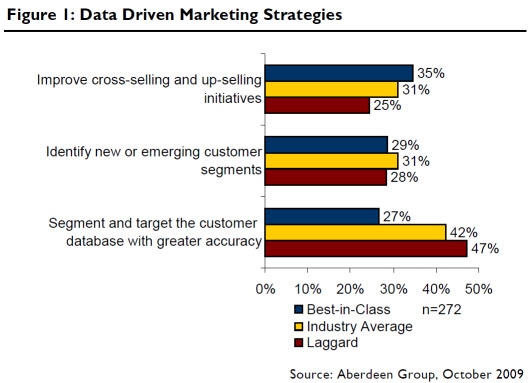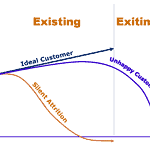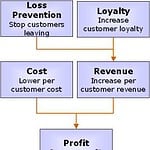Think quick: to drive customer retention, should you focus on a deeper understanding of your customer segmentation or take action with the data that you already have?
If you said segment your customer data base with greater accuracy, you probably picked the wrong answer. According to research by Aberdeen Group (“How the Best in class use customer data to boost retention revenue in 2010”) best in class organizations focus on “doing” more than they do on analyzing. This certainly has the ring of truth based on my experience.

It is a scene that we have observed many times in our customer experience management consulting practice. As we sit with the customer discussing what they would like to achieve we are met with a barrage of “can’t be done” because “our data is no good” or “we don’t know enough about our customers”. The desire to analyse, segment and target with ever greater depth is almost impossible to resist. More data piles on more data but we often seem to lose sight of the customer forest for the data trees.
As an example of this issue I’ll relate a recent customer experience. A few weeks ago I was running a workshop to design the high level segmentation fields that they wanted to use to describe their customers. After the initial flurry of segmentation style data was written up on the board I started to ask: “What will you do differently knowing that piece of information?” Applying this to each data field in turn, we ended up removing all but one key segmentation field and a couple of transactional indicators.
That one key field held the vast a majority of “how should we communicate with this person” information. The additional transaction indicators were then used to tweak the message to that person. All of the rest of the information was interesting but ultimately would never be used to change how they dealt with the customer.
Getting clarity on what drives customer purchases was good but the real value was to dramatically simplify their customer segmentation to the bare essentials. At the same time they made their ability to execute, simple, straightforward and easy to implement. It is now clear how they should communicate with each customer based on one key segmentation variable.
I think that this is indicative of many customer data segmentation projects and discussions. The desire for an ever more complex, elegant, mathematically perfect segmentation model is almost overwhelming but at the cost of making almost impossible to implement customer communications. When you have 20 segmentation variables you feel the need to use them all in your communications plan but that is hard to do in practice.
Building a solid interactive and relevant communications strategy with just a few variables is complex enough. As you increase the number of variables the design complexity becomes exponentially more complex until it is just too hard to implement.
So have a quick look at your customer database. How many of those segmentation variables actually impact on the messaging that you send to customers and how many are molasses in your process — they are sweet but just slow you down?
My Free Return on Customer Retention Calculator accurately estimates the value of customer retention Download Here









